Syracuse Poster Project
The Syracuse Poster Project, founded in 2001, brings together community poets and artists to create an annual series of illustrated poetry posters for the city's poster panels.
Our work...
- Fosters community throughout the Syracuse area.
- Reveals the city's character, strengthens its sense of place.
- Presents Syracuse as a diverse, creative, culturally vibrant city.
- Contributes to the revitalization of downtown.
- Activates public space.
- Demonstrates civic entrepreneurship.
- Cultivates unexpected pleasure (serendipity).
- Counters hometown negativity.
- Gives poets and artists opportunities to develop their craft.
- Reaches a broad audience through the sale of poster-based products.
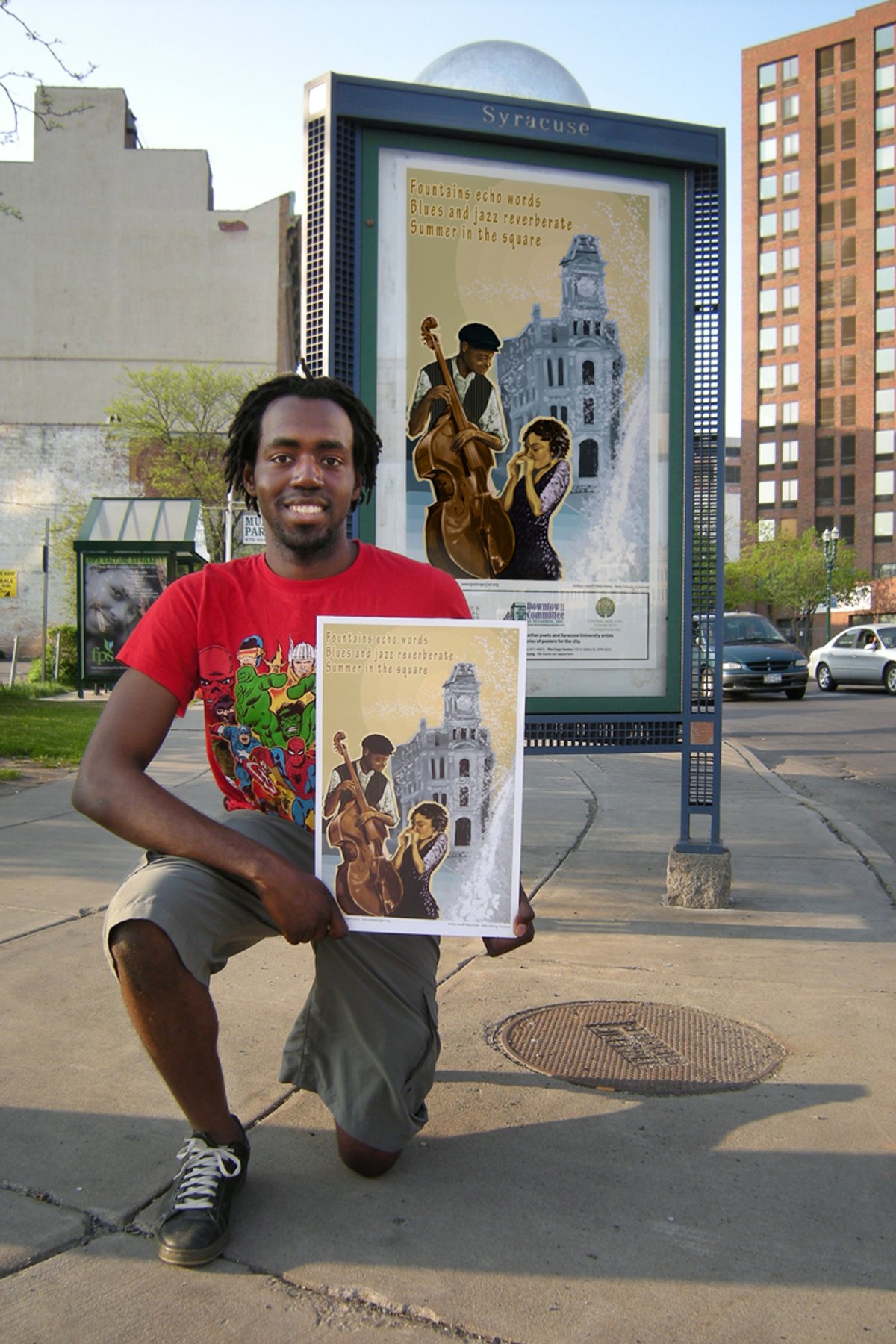
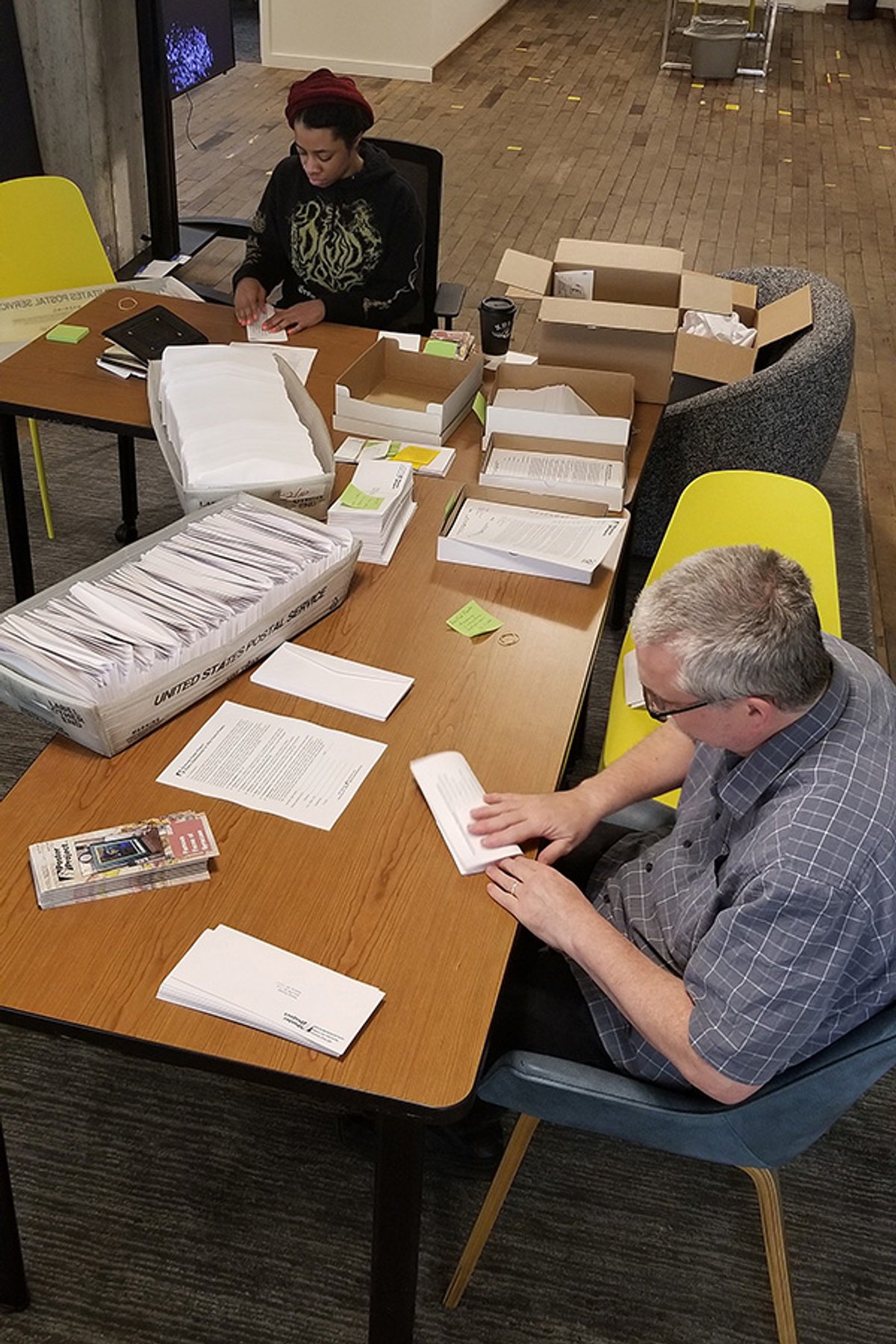
How We Do It...
The process begins with a call for poetry. Over the summer, the project solicits haiku and other short-form poetry. Poets submit work about downtown, the city at large, or the nearby countryside. In certain years, we refresh this formula by including a special, reverse-process poster, or by inviting poets to write on a theme.
For special posters, we may commission an artist to create an illustration, then invite poets to complement the image with a poem.
Or we may establish a theme, inviting poets to write about a series of Syracuse "spirits"--the spirit of nature and wild places, for instance--or about a series of historic Central New York characters.
Each year, approximately 100 poets participate, each submitting up to three short poems by the September deadline.
We then randomly allocate several poems to each participating artist. Artists each select one poem to illustrate and submit their work in November. A panel of independent judges selects the 10 posters (and sometimes more) that best combine poem and illustration. After a period of refinement and polishing, we release the posters at unveiling celebration in April.
A Brief History of the Project
The Project arose to address a problem with city infrastructure. In the mid-1990's, the city received a multi-million dollar federal grant to renovate the downtown streetscape. The work included benches, lamp posts, and poster kiosks to serve as advertising venues for downtown merchants. Sadly, the kiosks failed to attract advertisers and fell into disuse.
To re-activate the kiosks, the Poster Project brought together two resources: a tradition of Syracusans writing haiku for the Syracuse New Times' annual "Syr-Haikus" contest, and an illustration program at Syracuse University.
In 2001, Professor Roger DeMuth agreed to have his students participate by selecting and illustrating haiku. From this beginning, we continued to collaborate with the senior illustration class on an annual basis. Then, in 2018, we broadened our reach by implementing an open call for Central New York artists. Each year approximately 40 artists commit to participating. After screening poems, we allot four of our favorites to each artist. Artists then select and illustrate their preferred poems.
In addition to providing civic art for the city's kiosks, the Project has gone on to cultivate other venues for public art. Its work also appears in the poster boxes outside the Salina Street post office, in permanent poster panel installations around the city, and in properties managed by the Syracuse Housing Authority.
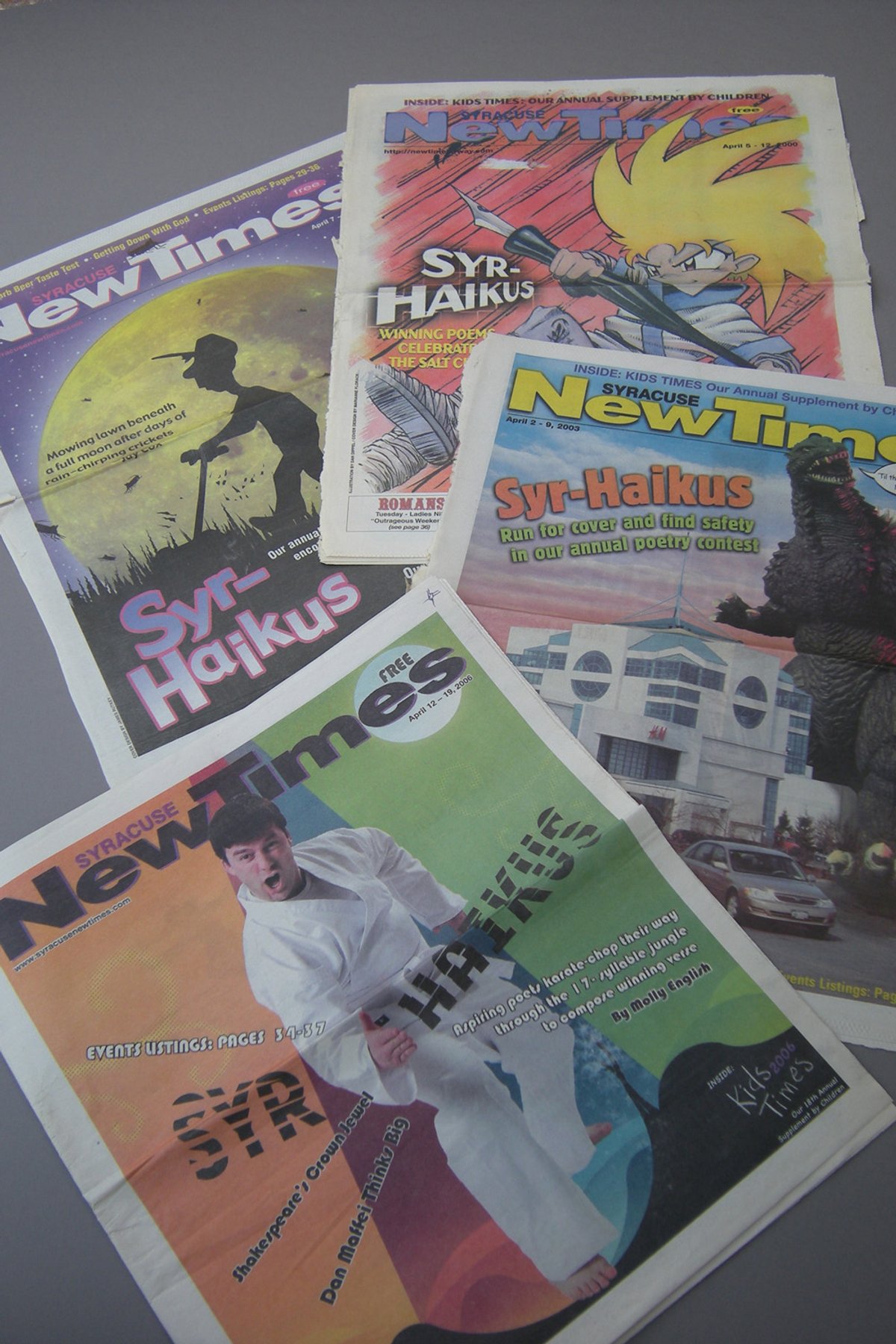
The Team
Our Approach to Teamdom: We strengthen the quality, creativity, and appeal of our project through diverse participation. Our project best reflects the community when our participation is inclusive. We consciously engage people from diverse corners of the community by actively recruiting them as team members, participants, board members, and panelists. The Syracuse Poster Project is committed to providing civic art created by the community and for the community.
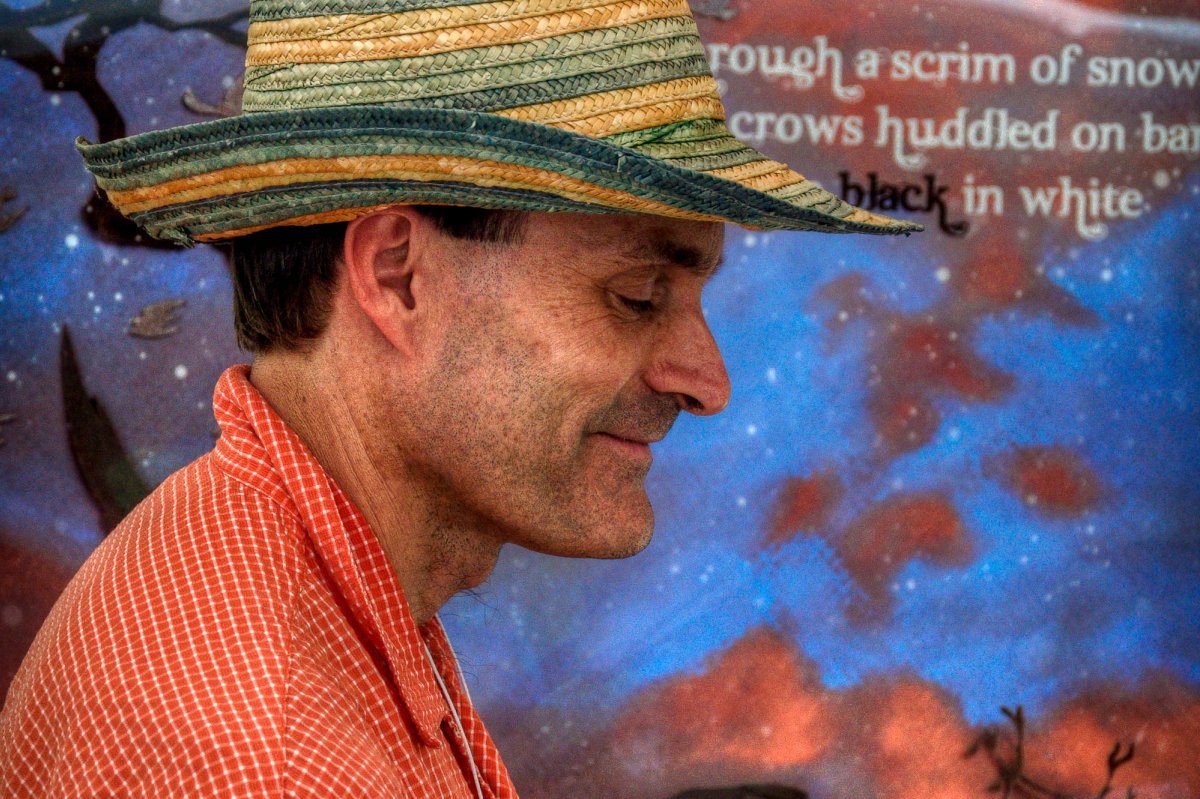
Jim Emmons
Board chairman and co-founder of the Syracuse Poster Project
Jim Emmons
Jim conceived of the project in 2000, and teamed up with an illustration professor at Syracuse University, Roger DeMuth, to make it happen. He came to the field of civic art from a career in journalism. At the Project's ongoing leader, he oversees a modest but dedicated team of interns, volunteers, part-time workers, and board members. He’s pictured here selling poster prints at the annual Syracuse Arts and Crafts Festival. (Photo by Mindy Lee Tarry.) To learn more about Jim's co-founding of the project, listen to Aldea Gerard's 2020 interview with Jim for the Cafe Kubal Artist Series, her podcast on Spotify.

Tom Carlin
Board member, treasurer.
Tom Carlin
Tom is an IT consultant in Syracuse. He has lived in central New York since 1972, and currently resides on the east side of the city. He is active in several organizations, including The Arthouse collective, The Minoa Library board, and the Meadowbrook Neighborhood Association. He spends his free time biking, enjoying the outdoors, frequenting local and national theater, and trying new restaurants.

Maura Harling Stefl
Board member
Maura Harling Stefl
Maura Harling Stefl works for SUNY College of Environmental Science and Forestry. She became familiar with us by submitting haiku, one of which was selected for illustration in the 2023 poster series. She is also an artist, creating collages with repurposed sheet metal from cans and vintage objects

Mary Ann Carlin
Board member, bookkeeper & accountant
Mary Ann Carlin
Mary Ann recently retired from a career in finance. She has an accounting degree from LeMoyne College and did accounting for local manufacturers. Midway through her career she also opened her own business, Microplay Video Games, which she operated for seven years before selling.
Mary Ann has a passion for civil rights and has contributed to the betterment of the Syracuse community through past roles as a board member at Sarah’s Guest House and as a crisis call operator and finance assistant at Vera House Inc.
She enjoys traveling, hiking, needle crafts and attending art festivals.

Faye Greene
Board member
Faye Greene
A native of Syracuse, Faye graduated from SUNY Plattsburgh with a BS in Child and Family Studies. She has worked as a youth counselor for the New York State Division for Youth, administrative assistant for Jubilee Homes, and program manager for the Urban League of Onondaga County. She presently works for Access CNY, managing a program for adults with disabilities. She attends Abundant Life Church, and volunteers in the Wellspring Café and for the School of Discipleship. She is the current president of the Women of Pearls, a women’s health and empowerment group. Faye is a fan of gospel music and hosted the Sunday morning gospel show for FM88 for over 12 years as a volunteer. She has also volunteered for the United Way, The Dunbar Center, the reading program at Blodgett Elementary, The Girl Scouts and many other non-profit organizations.

Richard Rodriguez
Board member
Richard Rodriguez
Richard is a two-time national award-winning author and poet, taking first place in 2019 and in 2023 at the National Veterans Creative Arts Festival (NVCAF). In 2019, for his poem “Homeless Masses.” In 2023, for “But for the Grace, a Humble Dedication.”
Richard is a disabled veteran and a single parent of two daughters, Cassandra and Maria, and two sons, John and Jaimes. He graduated from the University of Texas at Arlington with a bachelor’s degree in fine arts.
He enjoys script writing, storytelling, and writing science fiction, as well as gourmet cooking, walking, attending poetry raves, and performing standup comedy.
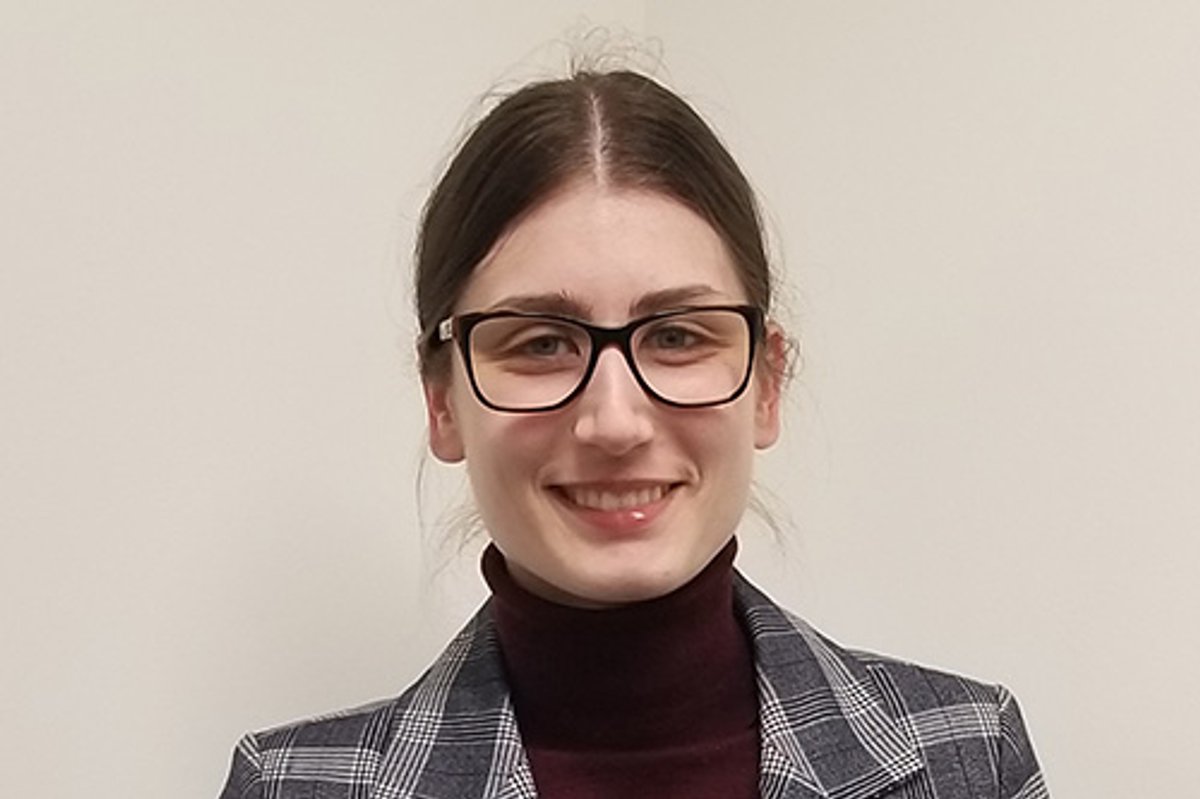
Diana Rogatch
Board member, secretary
Diana Rogatch
Diana graduated from Syracuse University with her J.D. and M.B.A. and decided to stay in Syracuse post-graduation, now working downtown as an attorney at Bousquet Holstein. In her spare time Diana loves to let her creativity flow whether through writing poetry, dancing, or baking elaborate treats for her friends. She also enjoys hiking in the mountains or going for long walks on the beach.
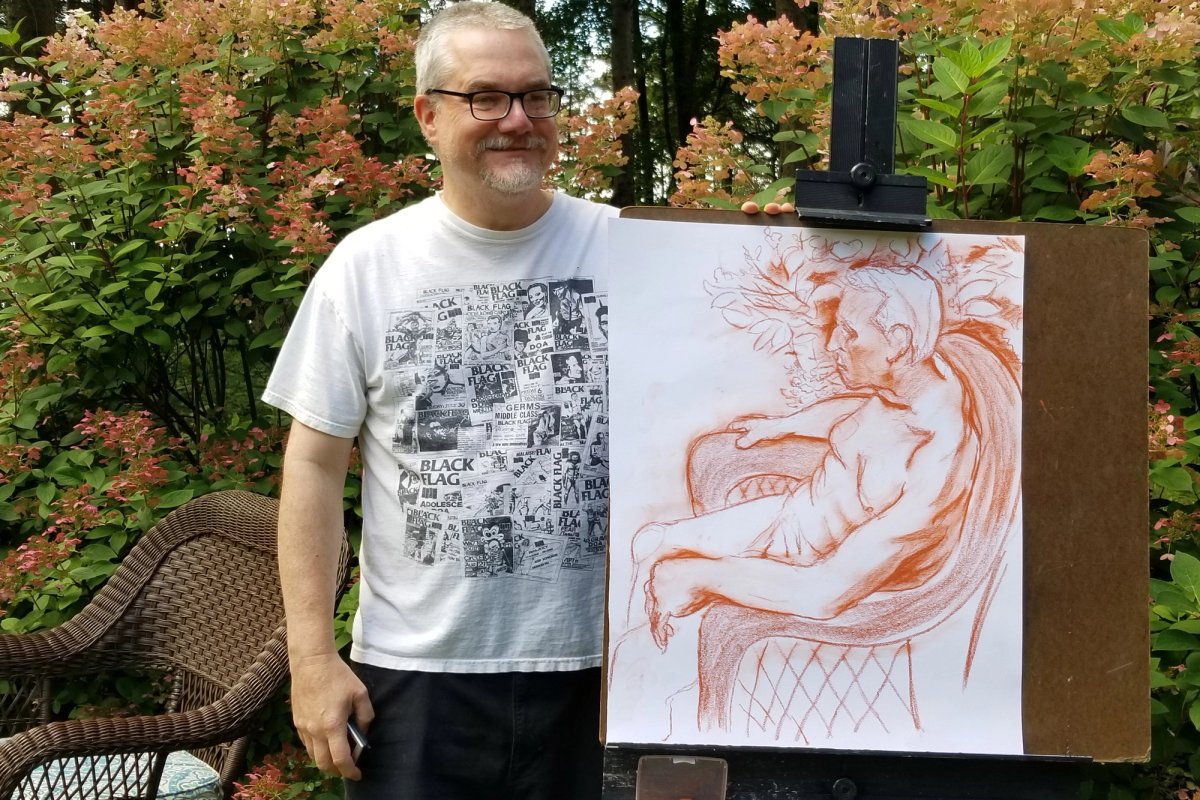
Scott Herrmann
Board member, vice president
Scott Herrmann
Scott Herrmann, board member (vice president) and sales and marketing officer. Scott is a Syracuse native and a graduate of Syracuse University, with a degree in art history. He has worked in banking and copy services. In addition to his work with us, he manages the Atrium Gallery for CNY Arts, the regional arts council. Scott is also an accomplished artist, working in black and white collage and life drawing. He is president of Open Figure Drawing, the long-standing life drawing group. His musical tastes are wide ranging, from heavy metal to John Coltrane.

Saptarshi Lahiri
Board member
Saptarshi Lahiri
Saptarshi came to Syracuse to pursue a graduate degree at the State University of New York College of Environmental Science and Forestry. After completing his studies and working at several local Central New York nonprofits, he shifted his focus to a career in libraries. Since 2023, he has managed the Makerspace at the Central Branch of the Onondaga County Public Library. In his free time, he enjoys reading nonfiction, playing music, hiking, and spending quality time with his family and pet rabbits.
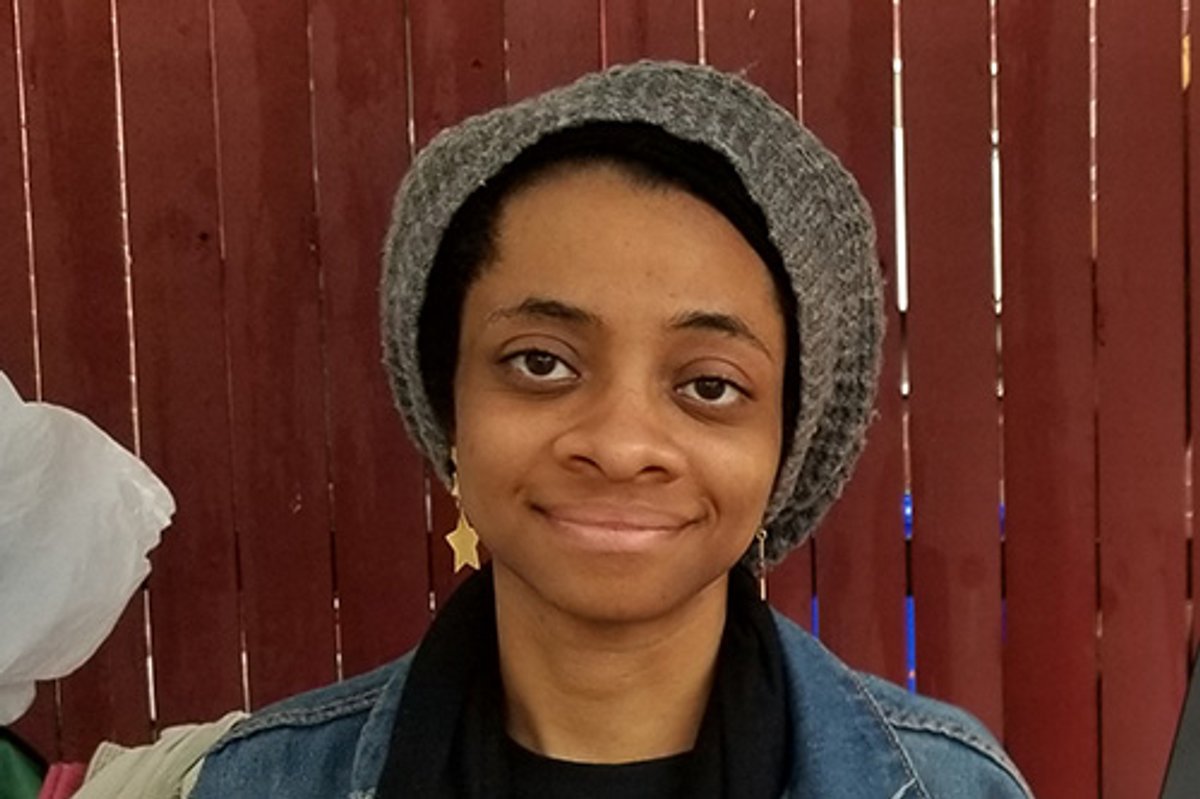
Naomi Masingale
Outreach coordinator and graphic designer
Naomi Masingale
Naomi graduated from Pratt Institute in 2010 with a BFA in fine arts and communication design. She joined us as an intern in 2017, as she was completing a master's degree in arts administration at LeMoyne College. She then returned as a part-time worker, helping us with outreach and graphic design. Outside work, she loves to geek out around heavy metal bands and chemistry- and math-themed comics. Learn more about her by visiting her website.

Mel Saffold, Brielle Dailey, Mike Vormwald
Web Development Team
Mel Saffold, Brielle Dailey, Mike Vormwald
Mike led the redevelopment of our website, which launched in 2024. As lead developer, he oversaw two web development interns, Mel Saffold and Brielle Dailey, who graduated from Hack Upstate's Careers in Code initiative, a coding program for people from low-income neighborhoods. Their work built on several semesters of in-kind work by Adam Peruta, a web instructor at the Newhouse School of Public Communications, and Adam's students, who created mock-ups of a re-designed site.

Rosalyn Carroll
Poetry Blog Manager
Rosalyn Carroll
Rosalyn M. Carroll manages our poetry blog. She's also one of our long-standing contributors of haiku, and since 2008, has had six haiku selected for illustration. An avid reader of poetry and literature, Rosalyn began writing haiku and short stories as a youngster.
A theatre arts major in college, she has pursued many creative interests over the years, including quilting, crafting and photography. Volunteering for a variety of local, not-for-profit organizations, such as Syracuse Poster Project, Syracuse Stage and CNY Jazz Arts Foundation, has given her a unique opportunity to gain further experience in the arts and to work with others who share similar interests.
Back when she was a full-time mom, Rosalyn instilled her love of the arts and humanities into her two children—and now, her two-year-old granddaughter whenever she can. She has also enjoyed sharing her crafting and writing skills as a literacy volunteer and as an instructor for a variety of student workshops.
When the weather allows, you’ll find Rosalyn walking along the Erie Canal where she often finds inspiration for haiku. In her spare time, she enjoys playing piano and listening to music, reading historical fiction, learning to paint with acrylics and taking an occasional art class at The Art Store and the Everson Museum.
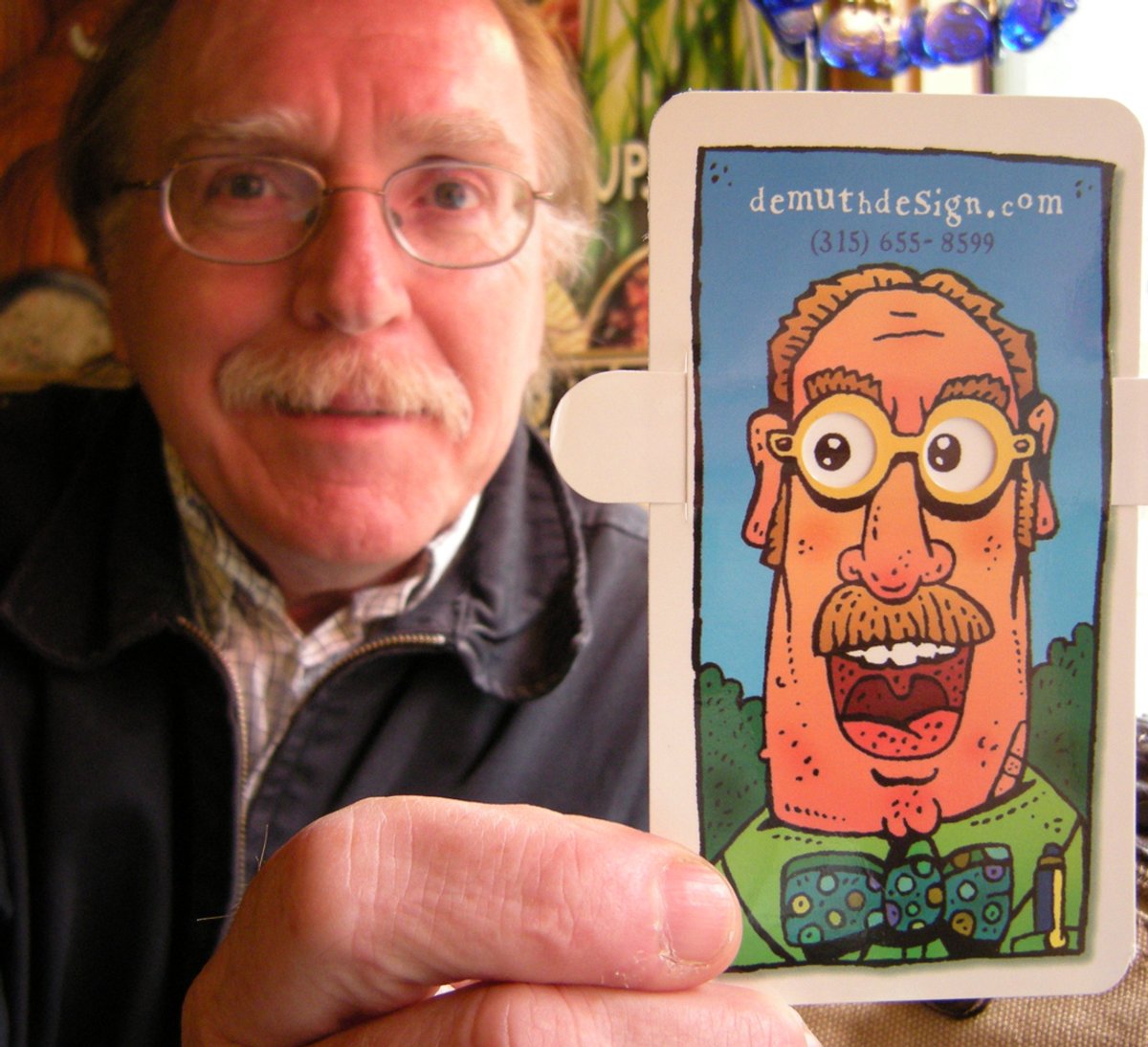
Roger DeMuth
Former professor in the illustration program at Syracuse University, and co-founder of the Syracuse Poster Project.
Roger DeMuth
Roger partnered with us from 2001 until his retirement in from teaching in 2015. He continues to work as an independent designer and illustrator from his home studio in Cazenovia. The work includes: children’s books, puzzles, maps, packaging, garden design, historic preservation, and panoramic photography. View it at www.rogerdemuthdesign.com
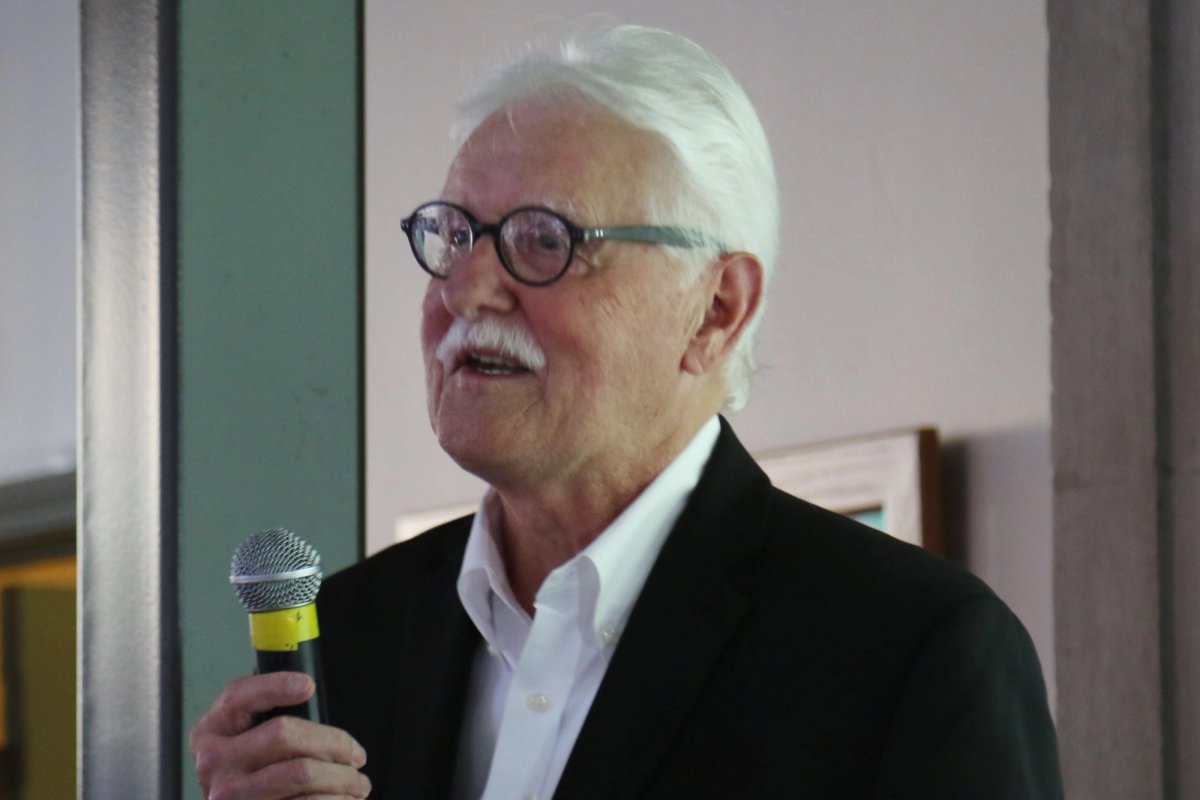
John Thompson
Former professor in the illustration department at Syracuse University
John Thompson
After Roger's retirement, we worked with John, until his retirement in 2017. In 2006, he won the Hamilton King Award from the Society of Illustrators for the best illustration of the year. He has illustrated stamps for the U.S. Postal Service and documented missions of the Armed Services. He has taught in Florence and taken students to India for painting and drawing classes. Visit his website.

Marty Blake
Professor in the illustration department at Syracuse University.
Marty Blake
Marty succeeded Roger DeMuth and John Thompson in teaching the senior illustration class at Syracuse University. She is also an independent graphic designer and illustrator specializing in digital collage. For the digital work, she scans material from her extensive personal library of old books, magazines, ephemera and wallpaper swatch books. Her gallery pieces incorporate cut paper, bits of lichen, and an occasional doll limb. Visit her website.
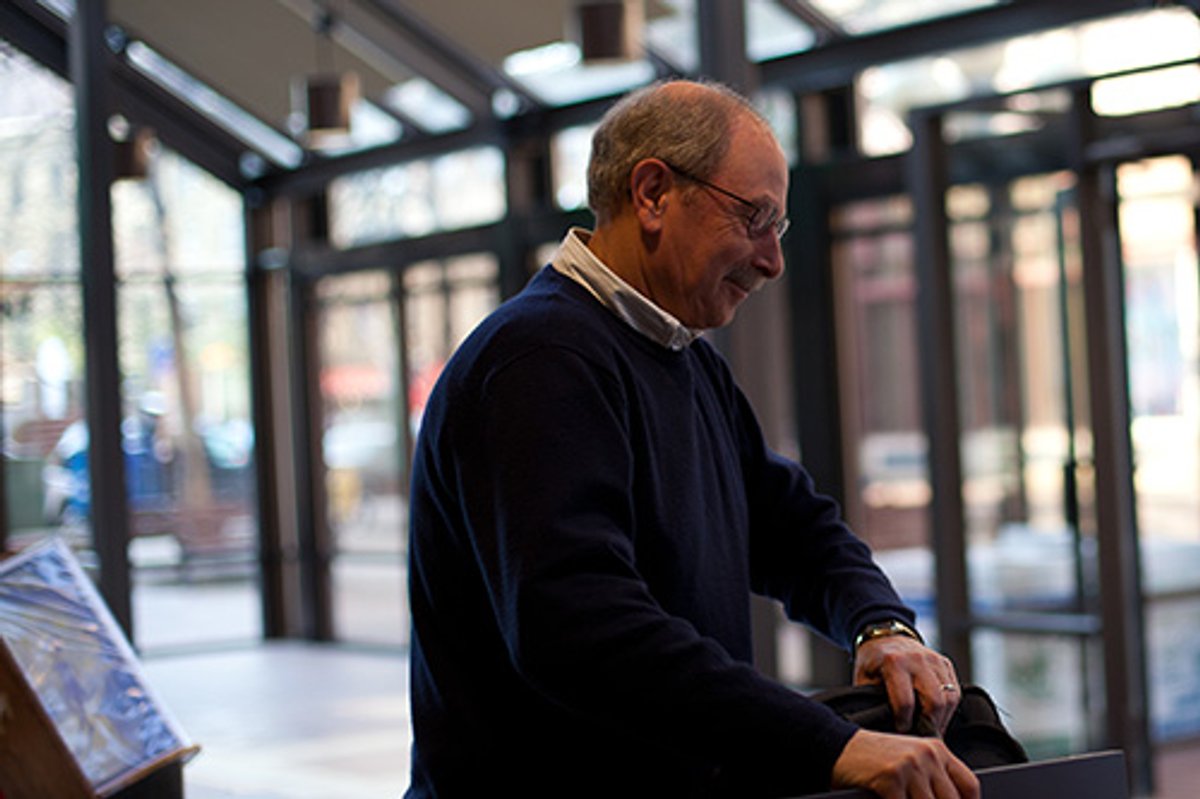
Eric Rogers
Founding board member.
Eric Rogers
Retired from Chase Design in Skaneateles, Eric remains active in civic affairs, travel, and sport. He's a long-standing participant in the civic engagement group, FOCUS Greater Syracuse, and former president and ongoing member of SCORE, an advisory group for small businesses. Next time you see our posters at the airport, think of Eric--he initiated that display. Photo by Caitlyn Bom.

Michael Moody
Artist
Michael Moody
With Michael's death, early in 2016, Syracuse lost a long-standing member of its art scene. He joined us over the summer of 2013 to work on the South Salina Street Art Initiative. Michael worked with Rachel McMillian, one of two youth workers, to install posters in venues along the South Salina Street business corridor. You can still enjoy his work in the mural he created at Westcott and Beach streets.
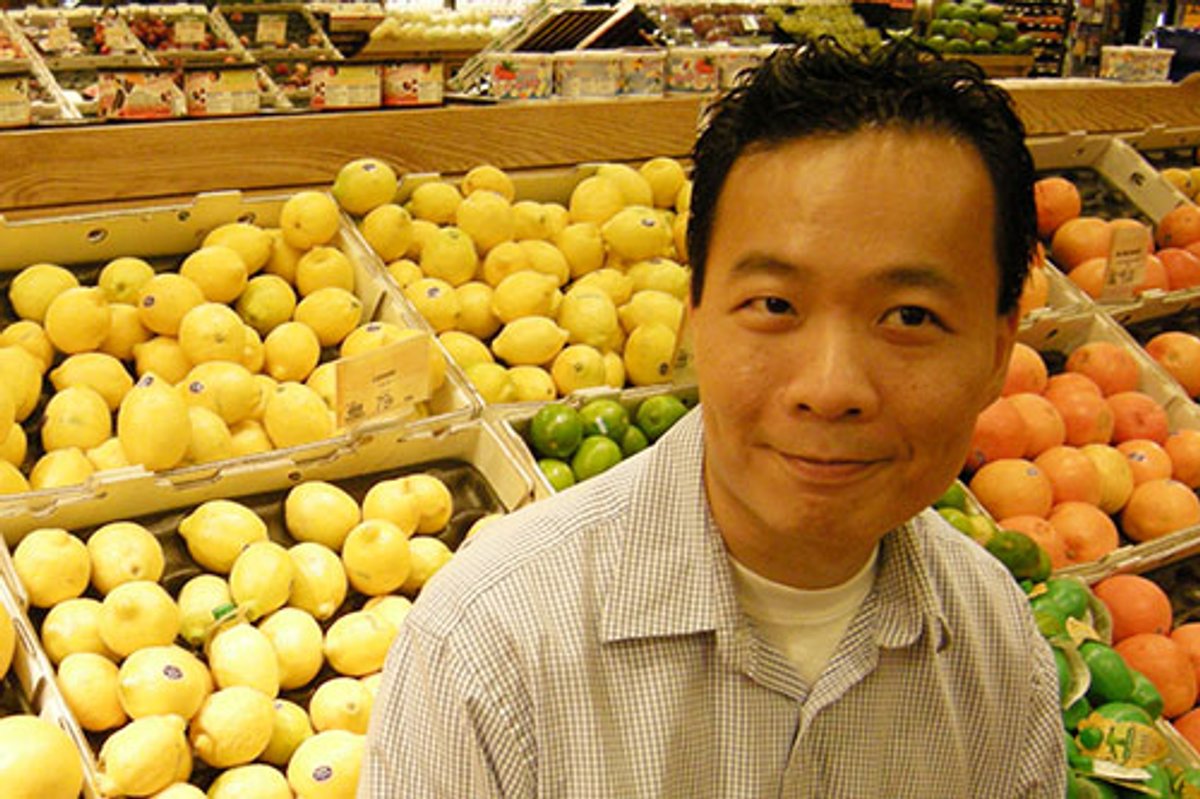
Peter Chan
Information technology specialist
Peter Chan
Peter designed our original website from the ground up. A native of New York City, he graduated from Syracuse University, spent a decade or so working as a tech specialist in Syracuse, then moved to Maryland for more work in the tech sector. He enjoys cooking and aviation, and has built a flight simulator in his basement. He’s pictured at his favorite supermarket.
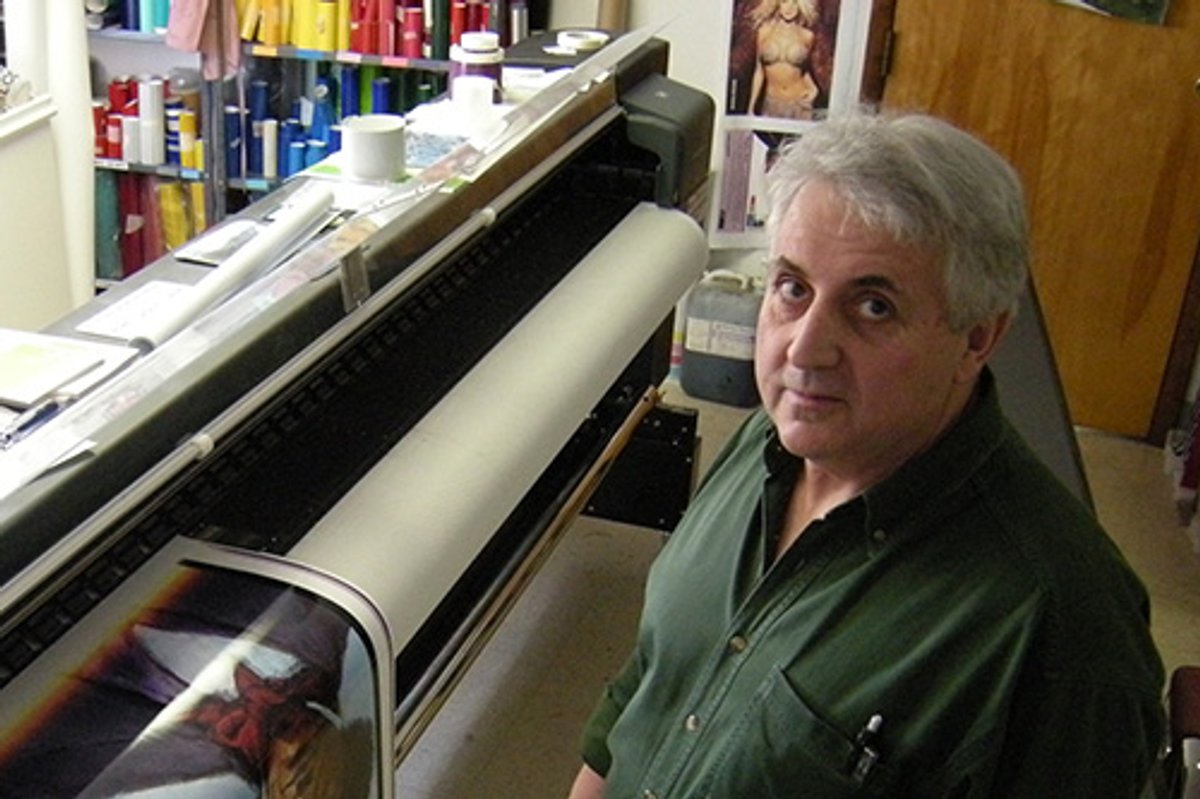
John Paratore
Owner of Paratore Signs in Mattydale
John Paratore
John uses sophisticated digital printers to print our large-format posters—the ones for the downtown poster kiosks. Paratore Signs was established by John’s dad, back in the day of hand-painted signs. It continues as a family business, with help from John’s wife, Paige, their daughter, Valerie, and son-in-law, Ian.
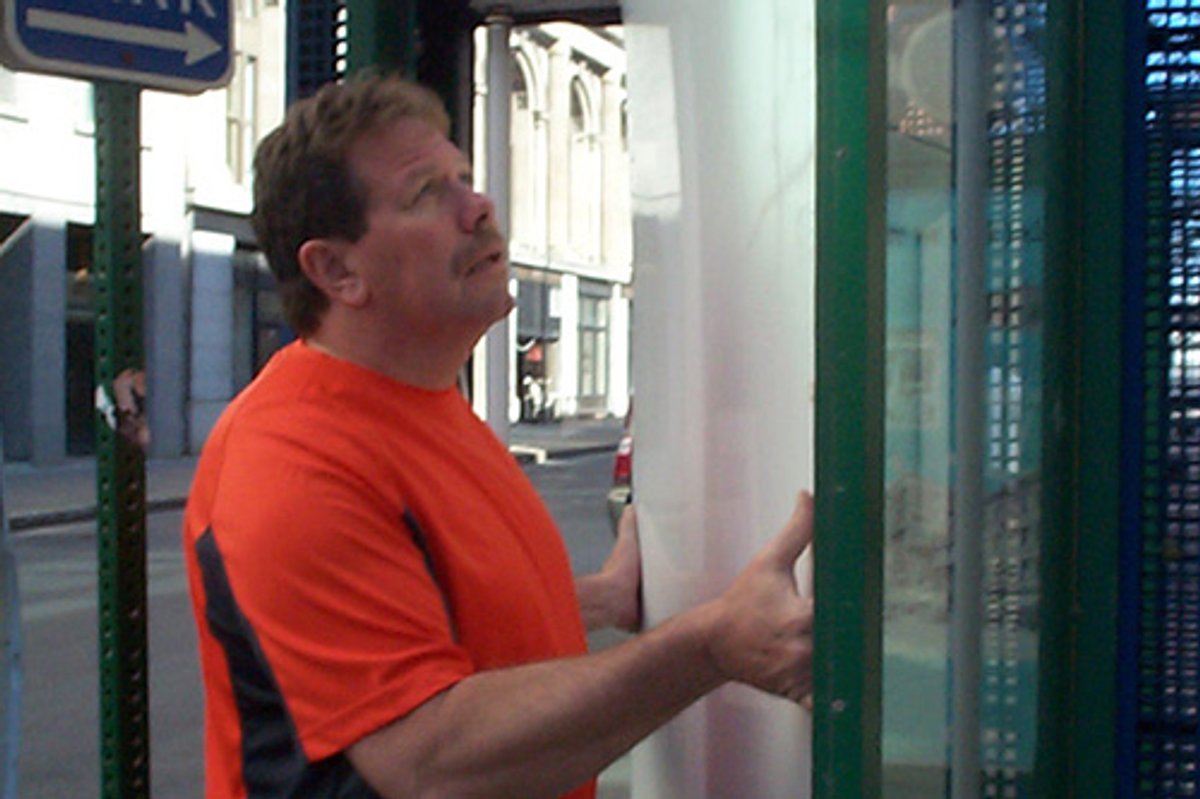
Chuck McFadden
Former director of maintenance for the Downtown Committee of Syracuse
Chuck McFadden
For most of the Project's history, it was Chuck who led the maintenance crew that changes out the poster panels. The crew cleans, maintains, and keeps downtown attractive. They also run the long-standing downtown farmer’s market, Tuesdays during the summer, at Salina and Washington Streets.
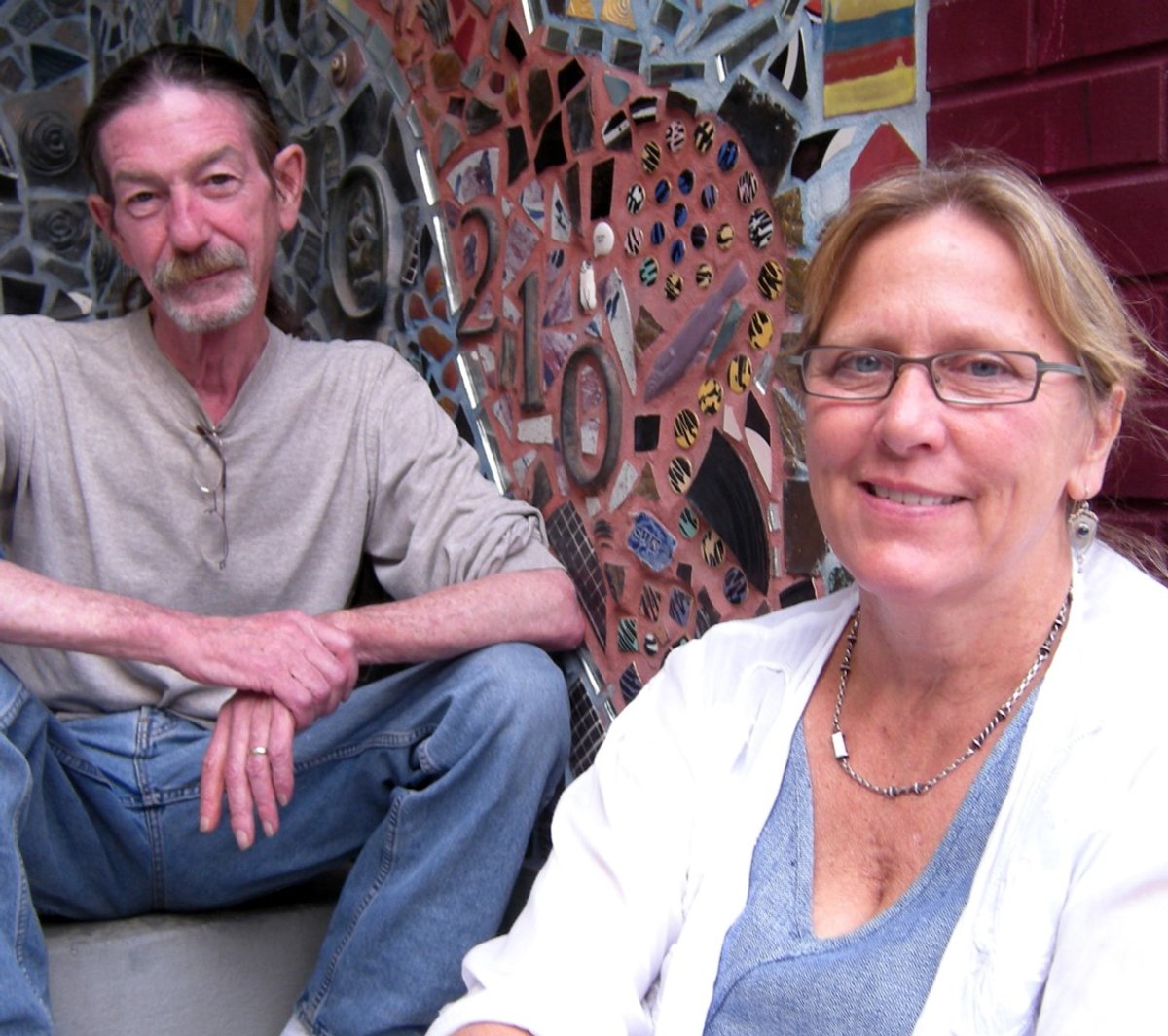
Tom Cunningham and Tina Parker
Co-founders of the former Eureka Crafts in Armory Square
Tom Cunningham and Tina Parker
Tom, Tina Parker and other Eureka-ites were among the pioneers of Armory Square. They opened Eureka just as the former warehouse district was reinventing itself. Eureka was an early supporter of the Poster Project, selling poster prints, and maintained a long tradition of selling and supporting authentic crafts.